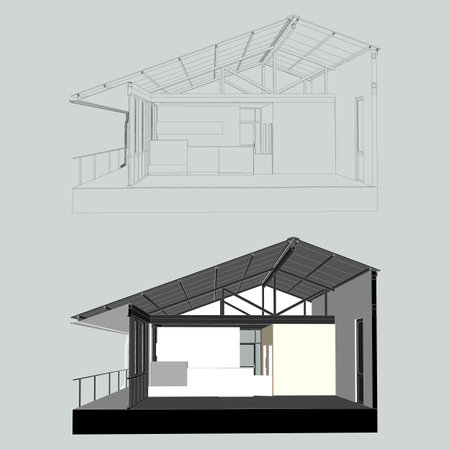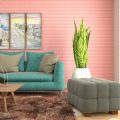Introduction: Sustainability in the British Design Landscape
In recent years, sustainability has emerged as a defining principle in the world of British interior design. No longer just a passing trend, eco-consciousness is now woven into the very fabric of contemporary homes and commercial spaces across the UK. This shift reflects a broader cultural awakening—one that places environmental responsibility at the heart of personal and collective values. From bustling London flats to serene countryside cottages, British designers and homeowners are increasingly prioritising materials and practices that tread lightly on the planet. The demand for sustainable interiors is not only about aesthetics; it mirrors a deep-seated respect for local heritage, craftsmanship, and the natural environment. As a result, British design is evolving to celebrate both beauty and ethical integrity, making sustainability an essential cornerstone of modern living spaces.
2. Key Sustainable Materials Popular in the UK
The British interior design landscape is experiencing a dynamic transformation as eco-conscious homeowners and designers embrace a palette of sustainable materials. These choices not only reflect a deep respect for the environment but also celebrate local craftsmanship and heritage. Below, we highlight some of the most prominent eco-friendly materials gaining traction across the UK, each offering unique qualities and aesthetics suited to contemporary British homes.
Reclaimed Wood: A Nod to Character and Heritage
Reclaimed wood has become a cornerstone of sustainable British interiors. Salvaged from old barns, factories, or even historic buildings, this material boasts rich textures, unique grain patterns, and a story woven into every beam or plank. British designers favour reclaimed oak, pine, and chestnut for flooring, feature walls, and bespoke furniture—imbuing spaces with warmth and authenticity while reducing deforestation.
British Wool: Comfort with Local Roots
Celebrating the UK’s long-standing wool tradition, British wool is making a strong comeback in modern interiors. Naturally renewable and biodegradable, this material is prized for its insulating properties, resilience, and luxurious feel underfoot. Whether used in carpets, upholstery, or decorative throws, British wool connects interiors to the countryside’s rolling landscapes while supporting local farmers.
Bamboo: Fast-Growing and Versatile
Bamboo’s rapid growth rate and minimal need for pesticides make it an increasingly popular sustainable choice in the UK. Its light, clean aesthetic suits both traditional cottages and sleek urban flats. Designers are integrating bamboo into flooring, wall cladding, window blinds, and even kitchenware—offering durability alongside subtle elegance.
Recycled Metals: Industrial Chic with an Eco Edge
Repurposed metals such as aluminium, steel, and copper bring an industrial flair to British homes while championing circular design principles. Used in lighting fixtures, furniture frames, hardware, and decorative accents, recycled metals reduce demand for virgin resources and add a contemporary edge to interiors.
Comparison of Key Sustainable Materials in British Interior Design
| Material | Main Characteristics | Popular Applications |
|---|---|---|
| Reclaimed Wood | Unique patina; durable; history-rich | Flooring, walls, furniture |
| British Wool | Naturally insulating; soft; renewable | Carpets, upholstery, accessories |
| Bamboo | Fast-growing; lightweight; versatile | Flooring, blinds, panels |
| Recycled Metals | Industrial look; robust; sustainable sourcing | Lighting, hardware, decor |
This thoughtful selection of materials ensures that sustainability does not compromise style or comfort—ushering in an era where eco-friendly choices beautifully complement the distinctive character of British interior design.

3. Current Trends in Sustainable British Interiors
Across the UK, sustainable interiors have evolved from niche interest to mainstream movement, with British homeowners and designers championing a greener aesthetic rooted in thoughtful material choices and timeless style. Among the leading trends, upcycling stands out as an inventive approach that celebrates the character of vintage finds and reclaimed materials. From Edwardian sideboards restored to their former glory, to industrial lighting crafted from salvaged metals, upcycling not only reduces waste but infuses each space with unique personality and local heritage.
Biophilic design is another key trend gaining traction in Britain’s interior scene. This design philosophy brings nature indoors—think living walls of English ivy, abundant houseplants like ferns and peace lilies, or natural wood finishes reminiscent of native oak forests. Biophilic elements enhance wellbeing by improving air quality and connecting occupants with the calming rhythms of the natural world—an especially welcome respite in bustling cities from London to Manchester.
Minimalism, with its focus on simplicity and mindful consumption, has also found favour among eco-conscious Britons. Instead of cluttered rooms filled with disposable décor, today’s sustainable interiors prioritise fewer but better items: handcrafted ceramics from local artisans, sustainably sourced linens, and made-to-last furniture. The result is an elegant restraint—rooms that feel both luxurious and lived-in, where every object tells a story of quality and care for the environment.
Together, these trends showcase how sustainability is redefining British interior design—not just as a style, but as a holistic lifestyle choice. Through upcycling, biophilic touches, and minimalism, UK homes are becoming havens of beauty that tread lightly on the earth while honouring local craftsmanship and culture.
4. Influence of British Heritage and Local Craftsmanship
The revival of traditional British techniques and the enduring celebration of local craftsmanship are at the heart of the modern sustainable interior design movement in the UK. As homeowners and designers seek to reduce environmental impact, they increasingly turn to heritage skills—such as hand-weaving, woodworking, and ceramics—that not only preserve cultural identity but also offer unique, eco-friendly solutions for contemporary spaces.
The Role of Heritage Techniques
Many sustainable materials today are a direct result of time-honoured methods passed down through generations. Traditional approaches emphasise natural fibres, minimal processing, and long-lasting quality. For example, Harris Tweed—handwoven in the Outer Hebrides—remains a staple for upholstery and soft furnishings due to its durability and organic origins. Similarly, British oak is prized for its strength and versatility, often sourced from responsibly managed woodlands that reflect centuries-old forestry practices.
Local Craftsmanship: A Driving Force
British artisans play a pivotal role in shaping the nation’s sustainable interiors landscape. Their dedication to craft ensures that each piece tells a story rooted in locality, authenticity, and responsible sourcing. This resurgence of interest in handcrafted goods supports small businesses while reducing reliance on mass-produced imports.
Examples of Heritage Techniques in Sustainable Materials
| Technique | Material | Sustainable Benefit |
|---|---|---|
| Handweaving | Harris Tweed, linen | Biodegradable fibres; low energy process |
| Traditional Joinery | British oak, ash | Long-lasting furniture; locally sourced timber |
| Ceramic Glazing | Stoneware, porcelain | Durable, natural materials; reduced chemical use |
| Lime Plastering | Lime render & plaster | Breathable walls; natural insulation; minimal VOCs |
This deep connection between heritage and sustainability is further reinforced by local brands who collaborate with craftspeople to reinterpret classic styles using eco-conscious processes. Whether it’s the resurgence of botanical dyes or hand-thrown pottery, British interior design continues to honour its past while innovating for a greener future.
5. Local British Brands Championing Sustainability
Leading the Green Revolution in Interiors
The UK is home to a vibrant community of designers and makers who are placing sustainability at the very heart of their craft. These trailblazing brands not only prioritise eco-friendly materials, but also foster transparency, ethical sourcing, and innovative reuse—proving that style and sustainability can coexist seamlessly within British interiors.
Benchmark Furniture: Crafting with Conscience
Renowned for their commitment to natural materials and traditional joinery, Benchmark Furniture sources FSC-certified wood from British forests and finishes their pieces with plant-based oils. Their philosophy revolves around longevity, repairability, and low-impact manufacturing. The “Ovo” collection—elegant tables and benches crafted from locally grown ash—perfectly encapsulates their ethos of sustainable luxury.
Smile Plastics: Turning Waste into Wonder
This Welsh brand transforms discarded plastics into striking surface panels used for worktops, wall cladding, and furniture. Each piece is unique, telling a visual story of material rebirth. Smile Plastics champions circular design by keeping waste out of landfill and inspiring playful creativity in residential and commercial spaces alike.
Another Country: Modern British Minimalism
London-based Another Country blends timeless design with responsible production. Using sustainably sourced timber, low-impact finishes, and local manufacturing, they create beautifully simple furniture that’s made to last generations. Their “Series One” range exemplifies pared-back elegance while treading lightly on the planet.
Bristol Weaving Mill: Textiles with a Traceable Story
This independent mill weaves luxurious fabrics from British wool, organic cotton, and recycled fibres. Each textile is traceable from field to finished product, supporting local farmers and reducing transportation emissions. Their limited-edition throws and cushions bring a tactile sense of place to any interior scheme.
Pioneering a Greener Future
The efforts of these brands reflect a broader movement within British interior design—a shift towards authenticity, provenance, and environmental stewardship. By choosing homegrown makers who value both aesthetics and ethics, UK consumers are helping shape spaces that are as mindful as they are beautiful.
6. Challenges and the Future of Sustainable Materials
Despite the growing enthusiasm for sustainable materials in British interior design, several challenges remain before widespread adoption can become a reality. Sourcing sustainable materials locally is often hindered by limited supply chains and fluctuating availability, particularly for innovative products like recycled composites or bio-based finishes. Many British designers and homeowners still face difficulties accessing these materials consistently, which can slow down project timelines or force compromises on environmental ideals.
Affordability is another considerable obstacle. Although demand is rising, eco-friendly alternatives frequently come with a higher price tag due to lower production volumes and specialised processing methods. This can make it difficult for mass-market retailers or budget-conscious renovators to justify the initial investment, despite long-term benefits such as improved durability and energy efficiency.
Moreover, achieving mass adoption of sustainable materials hinges on shifting both consumer mindsets and industry practices. There remains a level of scepticism regarding performance and aesthetics, especially when compared to traditional options. Overcoming these perceptions will require robust education campaigns, transparent labelling, and continued innovation from local brands that marry sustainability with quintessentially British design sensibilities.
Looking ahead, the future of sustainable materials in British interiors appears promising yet complex. As technology advances and economies of scale are reached, costs are expected to decrease, making green choices more accessible across all market segments. Policy incentives and increased collaboration between designers, suppliers, and manufacturers will be crucial in developing scalable solutions tailored to the UK’s unique architectural heritage.
Ultimately, sustainable materials are poised to redefine the next era of British interiors—balancing heritage with innovation, comfort with conscience. The fusion of contemporary ecological thinking and timeless British style offers an exciting blueprint for spaces that not only reflect aesthetic aspirations but also champion environmental stewardship for generations to come.


